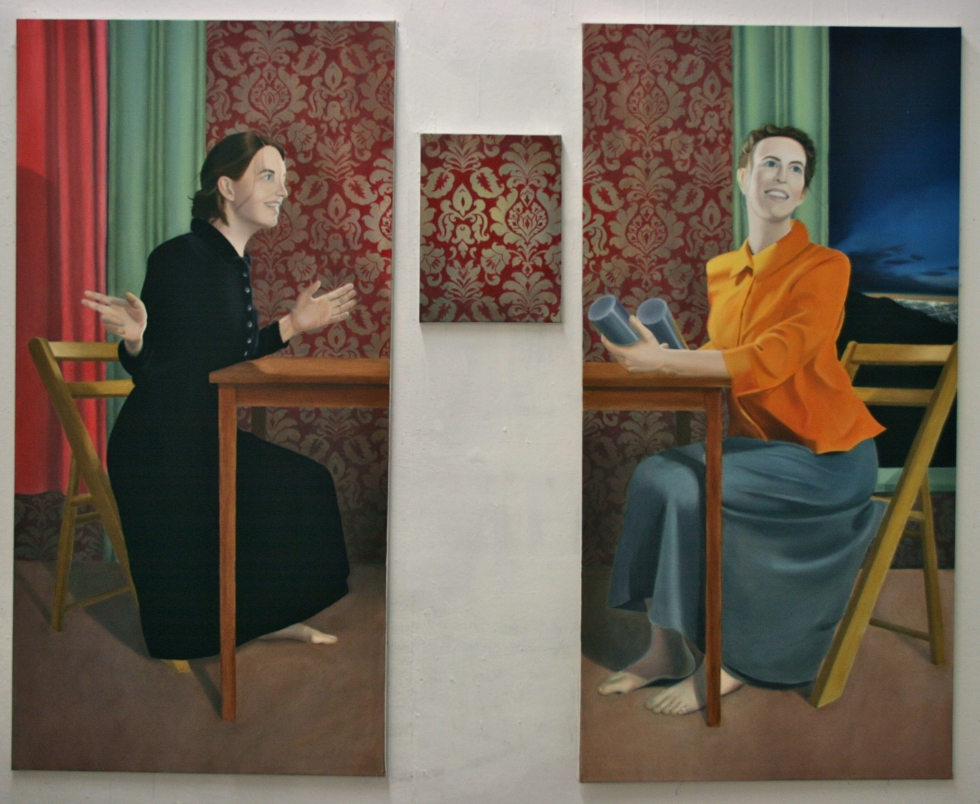
When I hear the word spirituality, two apparently contradictory images come to mind. One is an atomizer and the other a very material combination of bread, wine, and water. The atomizer or aerosol spray comes at me when I read or hear of spirituality when it is used as a code word for something advertised as somehow better, loftier, and more transcendent than, say, religion.
Note: what follows is not a screed against Zen Buddhism, mysticism, or meditation in its many forms. Nor does it simply dismiss people who want to “go it alone” with self-invented attempts to combine fresh esthetic and ethical impulses accompanied by a rejection of precedents and community. Still, that atomizer image which sprays molecule-sized bits of precedents and community suggests reasons for caution about some limits.
As for the esthetics, I may be interested to hear that you prefer Scarlatti to Gabrieli, Ella to Sarah, purple wallpaper to green, centering to de-centering. But most sustaining and inspiring elements of what we can call post-modern spirituality contain elements and inheritances of precedents and community, even as these elements may be obscured by those advertising spirituality’s benefits. What is more, while many “spiritual-but-not-religious” people can be profoundly devoted to ethics and are service-oriented in their dismissal of tired precedents and corrupt religious communities, one does not often discover profound, durable, and, yes, organized outcomes resulting from the “purely spiritual.”
I’d explain that spirituality-with-adjectives can serve in ways that what I call “spiritual spirituality” in its atomizing expressions cannot. Thus, “Buddhist spirituality,” “Jesuit spirituality,” “women’s spirituality,” “African-American spirituality,” and, for that matter, “humanist spirituality” give us something to whiff and bite into, to savor and employ the five senses.
As for the conflicting image: the spiritualities which are more impressive, in my exhibit of images, are very material. To illustrate I’ll raid the Christian treasury, but I could as well reach into Judaism, Islam, Hinduism, and more. Someone has said that, while Christianity deals seriously with “spirituality,” it is the most material of all the religions. Prove it? “You can’t even get it started or keep it going without a loaf of bread, a bottle of wine, and a river.” The material references to baptism and holy communion are obvious. Those material elements point to and stand for, among others, classic mysterious stories, workings of bands of peasants and/or princesses, voluntary associations, deathbeds and birth chambers, the armpit odor of builders, flowery fragrances of that beautifully distracting young woman who shares a work project of a youth group…
As for precedents: scrolls, monuments, books, and e-mail print-outs are very material aids. For example, being tried and often true, they contain words of judgment that I cannot water down and which might change me more than what I come up with if I “make things up as I go along.” They might ask for sacrifice, for team-playing, for profound textual research—all of which I can more easily avoid if I devise my spirituality on my own. They do ask for respect for the past, for exemplars, old texts, traditions, practices, and templates which I am then challenged to confront and out of which I get to help make something new. They are time-saving, because they help teach about what has been tried and proven to be foolish or evanescent. They are also often time-consuming, because they have enlarged the repertory of options with which I am to work.
And if none of the above prompts change, I can always count on someone who is “spiritual but not religious” and who favors “spiritual spirituality” to nudge or judge me and mine. We can both benefit as we interact. I can even picture some of these interactions being so positive that we’ll want to observe or record them and get others to pay attention to them as well. Odds are, we will thus be conjuring up material to be preserved in texts, traditions, communities and practices for new generations. In other words, we will be contributing to spirituality in forms which their critics will some day call religious.
And in the company of the religious and the spiritual I will not be insulted if critics say that these images stink; I’ll employ the atomizer to help render them acceptable. We learn from these encounters, dialogues mutual criticisms, and continuing searches on all sides of the divides and definitions spirituality prods and propels.